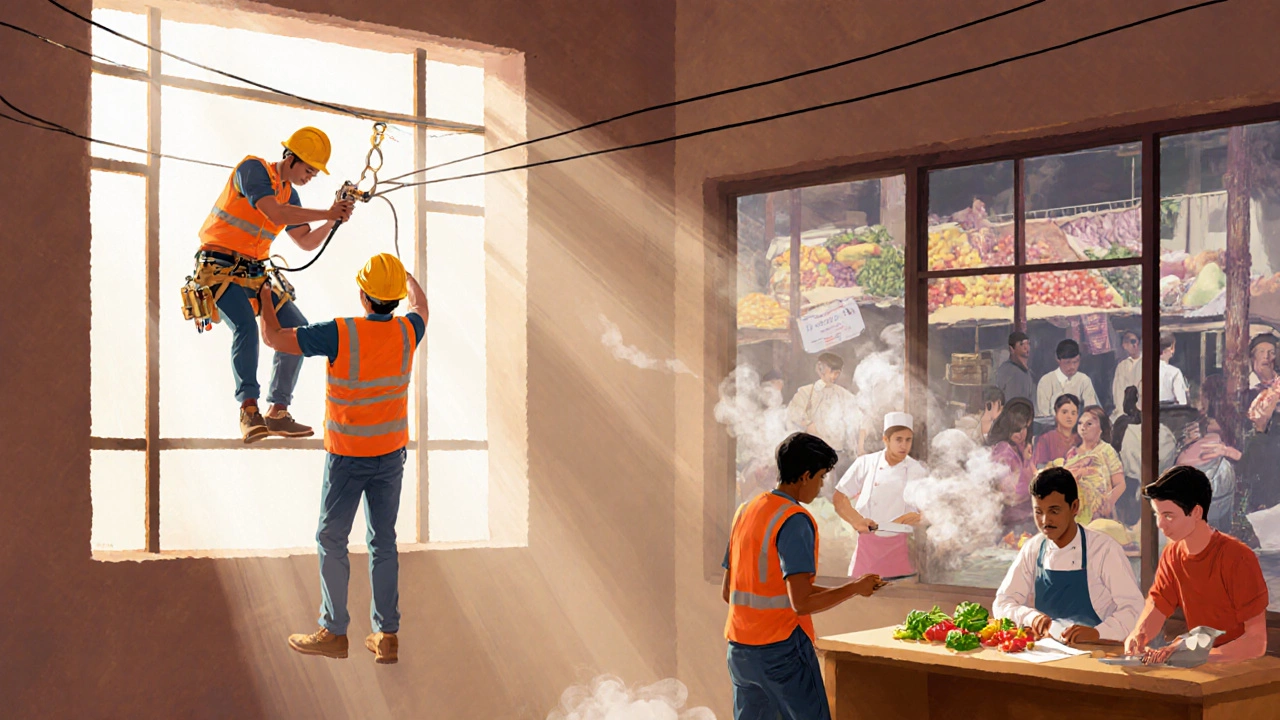Vocational Training Pathway Planner
Recommended Pathway
Key Takeaways
- Vocational training is a skill‑focused learning path that prepares you for specific jobs.
- It includes apprenticeships, trade‑school programs, short‑term certificates and on‑the‑job training.
- Examples range from electrician and chef to automotive technician and graphic designer.
- Benefits include faster entry into the workforce, higher starting salaries than many entry‑level degrees, and clear career ladders.
- Choosing the right program involves matching your interests with industry demand, accreditation, and available financial support.
What Is Vocational Training?
When people talk about vocational training, they are referring to education that teaches practical skills for a specific occupation rather than broad academic theory. Vocational training is a focused learning pathway that equips learners with job‑ready competencies, often through hands‑on practice, industry‑led curricula, and short‑term certification. In India, the government aligns most programs with the National Skill Qualification Framework (NSQF), a tiered system that maps skill levels from entry‑level to advanced mastery.
Core Features of Vocational Training
- Skill‑based curriculum: Lessons center on tasks you’ll perform daily on the job.
- Competency validation: Learners earn certificates or badges that prove they can meet industry standards.
- Industry partnership: Many programs are co‑created with employers, ensuring relevance.
- Short duration: Courses can run from a few weeks to two years, compared with three‑plus years for a degree.
- Direct pathways: Graduates often move straight into apprenticeships or entry‑level roles.

Main Types of Vocational Training
Vocational education isn’t a one‑size‑fits‑all model. Below are the most common formats you’ll encounter.
Apprenticeship
Apprenticeship is a blended learning model where you split time between workplace practice and classroom theory. The employer pays a stipend, and a certified trainer assesses your progress. In India, the Apprentice Act of 1961 governs these programs, and sectors like plumbing, electrical work, and manufacturing rely heavily on them.
Trade School
Trade school (also called vocational institute) offers full‑time, campus‑based courses that focus on a specific trade such as welding or culinary arts. Programs typically award a diploma after 1‑2 years and may include lab work, mock‑client projects, and industry‑certified examinations.
Certificate Program
Certificate program delivers a concise credential-often under a year-targeting a single skill set like graphic design software or medical billing. Many private training providers and community colleges run these tracks, and they often stack toward higher qualifications.
On‑the‑Job Training (OJT)
OJT is employer‑driven learning that occurs entirely within the workplace. Employers design short courses to upskill existing staff, ranging from customer‑service etiquette to advanced CNC machining.
Community College Vocational Courses
Community colleges blend academic and practical subjects. They might offer an Associate Degree in skill development that includes both general education and trade‑specific labs. Credits earned can often transfer to a bachelor’s program later.
Real‑World Examples of Vocational Training
Seeing concrete examples helps you picture what a day in each job looks like.
- Electrician - A two‑year apprenticeship under a licensed electrician teaches wiring, safety codes, and troubleshooting. Graduates receive a journeyman certificate and can work on residential or commercial projects.
- Chef - Culinary schools run 12‑month certificate programs covering knife skills, menu planning, and kitchen hygiene. Many students intern at hotels or restaurants for credit.
- Automotive Technician - Trade schools partner with car manufacturers to teach diagnostics, engine repair, and hybrid‑vehicle maintenance. Successful students pass ASE (Automotive Service Excellence) exams.
- Graphic Designer - A six‑month certificate in Adobe Creative Suite focuses on Photoshop, Illustrator, and layout fundamentals. Portfolios built during the course are used to land freelance gigs.
- Dental Assistant - Community colleges offer a one‑year program covering patient prep, radiography, and infection control. Graduates sit for the Certified Dental Assistant exam.
- IT Support Technician - Short‑term bootcamps teach troubleshooting, networking basics, and help‑desk software. Many learners earn CompTIA A+ certification within months.
Why Choose Vocational Training?
Here are the most compelling reasons people pick this route.
- Speed to employment: You can start earning within weeks or months, unlike a three‑year degree.
- Higher entry‑level pay: According to the Ministry of Skill Development, apprentices in skilled trades earn up to 30% more than fresh graduates in non‑technical fields.
- Clear career ladders: Certifications often map directly to pay scales-e.g., a certified electrician can progress from helper to foreman to contractor.
- Flexibility: Many programs offer evening or weekend batches, allowing you to work while you learn.
- Industry credibility: Employers trust certifications vetted by bodies like the NSQF or the All India Council for Technical Education (AICTE).

How to Pick the Right Vocational Program
- Identify your interest: List tasks you enjoy-hands‑on repair, cooking, designing, etc.
- Research demand: Check local job portals or the National Career Service for vacancy numbers in that trade.
- Verify accreditation: Ensure the institute is recognized by the industry partnership or a government body like NSQF.
- Compare costs and financial aid: Many state schemes reimburse up to 70% of tuition for eligible candidates.
- Look for placement support: Institutes that guarantee interviews or have tie‑ups with local firms boost your chances of quick employment.
Pathways & Certifications
Vocational training often serves as a stepping stone. After completing a Level3 NSQF certificate, you can:
- Enroll in a Level5 diploma for managerial roles.
- Switch to an applied bachelor’s program in engineering technology.
- Start your own micro‑enterprise using the skill you’ve mastered.
Popular government schemes like the Pradhan Mantri Kaushal Vikas Yojana (PMKVY) fund short‑term courses and provide industry‑linked certifications.
Vocational Training vs. Traditional Academic Degree
| Aspect | Vocational Training | Academic Degree |
|---|---|---|
| Focus | Job‑specific skills | Theoretical knowledge + broad skill set |
| Duration | 6months-2years | 3years-4years |
| Cost (India) | ₹20,000-₹1,50,000 | ₹1,00,000-₹5,00,000 |
| Employment lag | 1‑3months after graduation | 3‑9months on average |
| Typical starting salary | ₹2.5LPA-₹4LPA | ₹3LPA-₹5LPA (varies widely) |
| Recognition | Industry‑backed certificates (NSQF, PMKVY) | University degrees (UGC‑approved) |
Frequently Asked Questions
Is vocational training only for people who don’t want a college degree?
No. Many students use vocational programs to gain a foothold in a specific industry and later pursue higher education. The pathways are flexible, not exclusive.
How long does it take to become a certified electrician?
Typically a 2‑year apprenticeship plus a final exam. Some trade schools offer a 1‑year diploma, but most employers prefer the apprenticeship route for hands‑on experience.
Are vocational certificates recognized across Indian states?
Certificates aligned with the NSQF are nationally portable. Always verify that the training provider is listed on the NSQF portal.
What financial aid options exist for vocational students?
The PMKVY scheme offers up to 70% fee reimbursement, while state skill development corporations provide scholarships for women and SC/ST candidates.
Can I switch from a vocational track to a bachelor's degree later?
Yes. Many universities accept NSQF‑level certificates as credit for related bachelor’s programs, especially in engineering technology, hospitality, and applied arts.

Write a comment